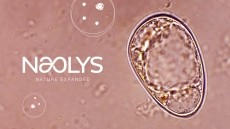Big brand boost: Sandalwood’s blue light findings aid Quintis’ European expansion drive
![Quintis has confirmed in vitro findings that sandalwood oil is more protective than vitamin E against blue light damage. [Quintis]](/var/wrbm_gb_food_pharma/storage/images/_aliases/wrbm_large/publications/cosmetics/cosmeticsdesign-asia.com/article/2022/05/05/sandalwood-s-blue-light-findings-aid-quintis-european-expansion-drive/15386353-1-eng-GB/Sandalwood-s-blue-light-findings-aid-Quintis-European-expansion-drive.jpg)
“This clinical study has proved that Indian sandalwood can protect the skin by reducing oxidation of skin caused by environmental blue light. We are excited that this study further emphasises the power of Indian sandalwood oil in protecting the skin against environmental damage, further proving the multipurpose nature of this precious ingredient in cosmetics,” Dhanushka Hettiarachchi, technical products specialist at Quintis Sandalwood, told us.
The study found that sandalwood oil, at a concentration of between 1% and 10%, protects the skin against the oxidative stress induced by urban dust and blue light exposure.
Twenty-two healthy volunteers between the ages of 18 and 65 took part in the 11-day study, which was conducted as a monocentric, controlled, randomised, double blinded, intraindividual comparative trial. Five different products were applied zonally to participants’ upper backs: experimental products containing 0.1%, 1% and 10% doses of sandalwood oil, a placebo and a 0.5% alpha-tocopherol positive control, and the skin was exposed to ambient dust followed by blue light. To evaluate the protective effect of the products, the level of the oxidised form of squalene (SQOOH) was monitored.
10% sandalwood oil comes out on top
The skin zone treated with the 10% sandalwood formula demonstrated the highest protective efficacy with the lowest amount of SQOOH.
“The highest concentration of sandalwood at 10% exhibited the lowest amount of SQOOH of 343.66ng/mg protein compared to 549.46n/mg protein on the nontreated and exposed area,” wrote the researchers in the journal Cosmetics.
They equated this to a 37% decrease when compared to the non-treated exposed zone. The 1% sandalwood oil also showed a strong protective effect, through a 31% decrease in SQOOH levels versus the non-treated exposed zone. The alpha-tocopherol control demonstrated the third-highest level of protection, reducing SQOOH levels by 28%, while the 0.1% sandalwood oil displayed the lowest protective efficacy.
These findings indicated a dose-dependent effect - in that increasing the concentration of sandalwood increased its protective antioxidative activity.
Mechanism explained
Asked to explain the mechanism behind sandalwood oil’s ability to protect against oxidative stress, Hettiarachchi said: “Quintis’ previous in-vitro study found that Indian sandalwood oil reduces the generation of reactive oxygen species within the keratinocytes when exposed to environmental stressors. Indian sandalwood oil is believed to upregulate the cellular antioxidant mechanism to scavenge this formation.”
Looking ahead to the future, he said Quintis hopes to conduct larger cohort studies to evaluate the benefits of cosmetic products containing sandalwood against environmental stressors, in real-life exposure.
“Indian sandalwood is a complex ingredient and there are a number of areas we have identified for potential further research - our intention is very much to continue conducting research primarily in the areas of skincare and the mood-enhancing effects of sandalwood,” Hettiarachchi added.
Claims equal commercial opportunities
In terms of how this scientific advancement aligns with the company’s commercial strategy in cosmetics, Hettiarachchi said: “Well-substantiated claims of sandalwood as a multi-faceted ingredient give us the opportunity to target all cosmetic applications, ranging from facial treatments to perfumes.
“Quintis believes that our opportunities are well placed with the highly sophisticated European market where consumers value the quality and ethics of a product.”
According to Hettiarachchi, Europe is an important market for Quintis, with demand driven primarily by the trend towards natural, sustainable, responsible ingredients that also provide therapeutic benefits to the skin.
“It’s no secret that consumer demand for efficacious products is continuing to grow,” he said.
Hettiarachchi confirmed that Quintis has “guaranteed sustainable and ethical supply to meet this growth in demand”, through its Indian sandalwood plantation estate, which is home to more than 5.5 million sandalwood trees.
“Quintis’ Indian sandalwood meets market trends and we have had a lot of interest from some of Europe’s biggest brands to develop skincare products containing sandalwood,” he said.
Source: Cosmetics
https://doi.org/10.3390/cosmetics9020035
“Clinical Evaluation of Indian Sandalwood Oil and Its Protective Effect on the Skin against the Detrimental Effect of Exposome”
Authors: Lutchmanen Kolanthan, et al
![Biologi study claims to prove that its Kakadu plum-derived vitamin C is superior to ascorbic acid. [Biologi]](/var/wrbm_gb_food_pharma/storage/images/_aliases/wrbm_medium/publications/cosmetics/cosmeticsdesign-asia.com/article/2022/05/19/biologi-s-highlights-new-research-claiming-natural-vitamin-c-is-better-than-ascorbic-acid/15390670-1-eng-GB/Biologi-s-highlights-new-research-claiming-natural-vitamin-C-is-better-than-ascorbic-acid.jpg)
![The protective beauty space holds an array of opportunities to tap into, from environmental and digital pollution through to stress management and wellbeing [Getty Images]](/var/wrbm_gb_food_pharma/storage/images/_aliases/wrbm_medium/publications/cosmetics/cosmeticsdesign-europe.com/article/2022/05/13/protective-beauty-promise-in-multifunctionals-across-blue-light-pollution-and-stress-say-mintel-globaldata/15411040-1-eng-GB/Protective-beauty-promise-in-multifunctionals-across-blue-light-pollution-and-stress-say-Mintel-GlobalData.jpg)
![Several herbal extracts are documented as offering protective or healing properties around UV exposure, including rosemary, lemon balm and grapefruit [Getty Images]](/var/wrbm_gb_food_pharma/storage/images/_aliases/wrbm_medium/publications/cosmetics/cosmeticsdesign-europe.com/headlines/formulation-science/herbal-extracts-sunscreen-and-uv-skin-damage-promise-finds-review/15406249-1-eng-GB/Herbal-extracts-sunscreen-and-UV-skin-damage-promise-finds-review.jpg)













